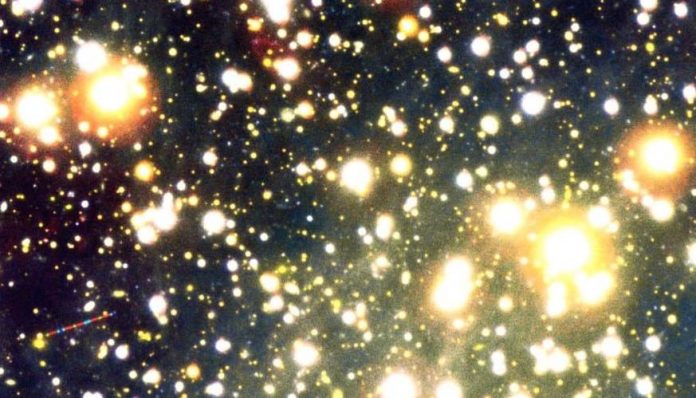For the first time in 80 years since scientists predicted it, vacuum birefringence actually exists. Scientists from Italy and Poland observed a weird quantum effect in the polarized light of empty space around a neutron star.
Researchers first caught wind of this strange phenomenon when they pointed the European Southern Observatory’s Very Large Telescope (VLT) at the neutron star RX J1856.5-3754, which has a magnetic field billions of times stronger than our sun’s, reports Popular Mechanics. They noticed that there was a high linear polarization of light waves in the empty space around the star. This is unusual because, according to conventional relativity at least, light should pass freely through a vacuum without being altered. But in this instance it wasn’t passing freely at all.
There could only be one explanation: the space was not empty after all. It must have contained those weird, spontaneously appearing bits of matter — “virtual particles,” if you will — that would influence the light waves and then vanish.
The good news is that scientists have a theory that can account for this. It involves a field known as quantum electrodynamics, or QED, which is actually the first theory where full agreement between quantum mechanics and special relativity has been achieved.
QED deals with the relationships between particles of light, or photons, and electrically charged particles such as electrons and protons. These relationships really come to a head when light passes through an intense magnetic field, such as what surrounds the neutron star in question. The virtual particles that result from this interaction are not really particles at all, but rather fluctuations in quantum fields. Though they’re merely “virtual,” the fluctuations nevertheless act like particles in that they can affect light.
“According to QED, a highly magnetized vacuum behaves as a prism for the propagation of light, an effect known as vacuum birefringence,” explained Roberto Mignani from the Italian National Institute for Astrophysics. “The high linear polarization that we measured with the VLT can’t be easily explained by our models unless the vacuum birefringence effects predicted by QED are included.”
Quantum mechanics certainly has its share of bizarre, anti-intuitive effects, but the existence of virtual particles might be among the strangest. If confirmed, this would be the first observational evidence ever uncovered of their existence even though they were predicted by theorists way back in the 1930s.
Theories of QED actually suggest that universe ought to be teeming with virtual particles, which can certainly be eerie to think about. And it took the intense magnetic field of a distant neutron star to finally reveal them to us.















